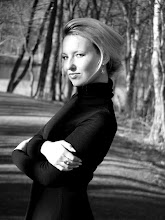























VISION FROM THE OTHER WORLDS
Preface:
Parallel worlds in confined spaces yield an unrealistic picture that we don’t experience as veritable in our everyday life.
These worlds influence our identity and shape the personality.
We exceed the limits of these worlds several times a day. We also encounter interferences of these parallels in the streets and handle them oftentimes with caution.
We perceive our domestic world as familiar and homely.
Waking up in the morning and preparing for the long working day we frequently have to cope with unhappiness and even with fears.
We leave our home and go out.
At first glance, this world looks exactly like the other one, but is nevertheless different and not considered by anyone of us. This world is the meeting point of the parallel worlds. For people can live in the same town and inhabit at the same time different planets.
Even windows of the houses transmogrify these small independent worlds.
I became aware of the parallel worlds for personal reasons.
When I was about nine years old, I moved with my family from Kazakhstan to Germany. Into a completely different world which we had to discover cautiously before acquainting with it.
But I always knew that I had brought a part of my home world to Germany whereas a part of me had been left in Kazakhstan.
I often wonder what would have become of my life if my family had stayed there in this absolutely opposite world which differs from our apparently stable western world. The corset of the parallel worlds is clearly looser there. These worlds are there more contrasted than in Europe.
Hence, it is not surprising – the country was virtually reinvented over the past years.
After the collapse of the Soviet Union, Kazakhstan emerged as an independent country, the open gate between Europe and Asia.
The city’s name Tselinograd was changed three times and was made capital of Kazakhstan as ‘Astana’.
The whole urban environment experienced an incredible development wave.
Skyscrapers grew up in the steppe. New influences appeared in the country, Asian and European ones. People of different nationalities and origins came together.
Everybody contributed a part of her or his own world to a new, yet unformed sphere which united unimaginable parallel worlds. The ‘Tselinogradian’ origins however didn’t vanish.
They were preserved as if in a cold store, in fact precisely like twenty years ago.
Regardless of the parallel world in which one may live, ‘The human being is always the portrait of their world’.
By means of my photographic works I want to show the special relationship between the human being and their environment as well as the neighbourship of the parallel worlds.
The photographs were taken in Astana, Kazakhstan, within a radius of 20 km.
PHOTOGRAPHY & DESIGN OLGA KUDRJAWZEWA / TRANSLATED BY INNA BELOUS
Behind the neighbouring hole of a sieve
Looking out of the window I see wet roofs.
The windows of the houses are as close as holes of a sieve.
Structured in the same way but different in live and colour.
Every window has its own living heart, its own world.
If I touch it quietly, I feel the pulse beat.
My world is held by my four walls.
They are as thin and sensitive as my skin.
They feel every stone and hear the neighbour breathing.
If I open my window, I shrink back.
The urban hysteria interpenetrates my body.
The club „to be“, which is below me, boils with heads.
It is deceived idyllically by the refractory transparency of the window glass.
My mirror image shows me a strange picture.
The whole town is my oyster.
This sight makes me dream.
I see in me the portrait of my town.
The lights of the night embellish my eyes.
They conceal my distant view.
I often wonder how life would be in the other world.
What would this world have formed of me?
And what would this world mean to me?


Keine Kommentare:
Kommentar veröffentlichen